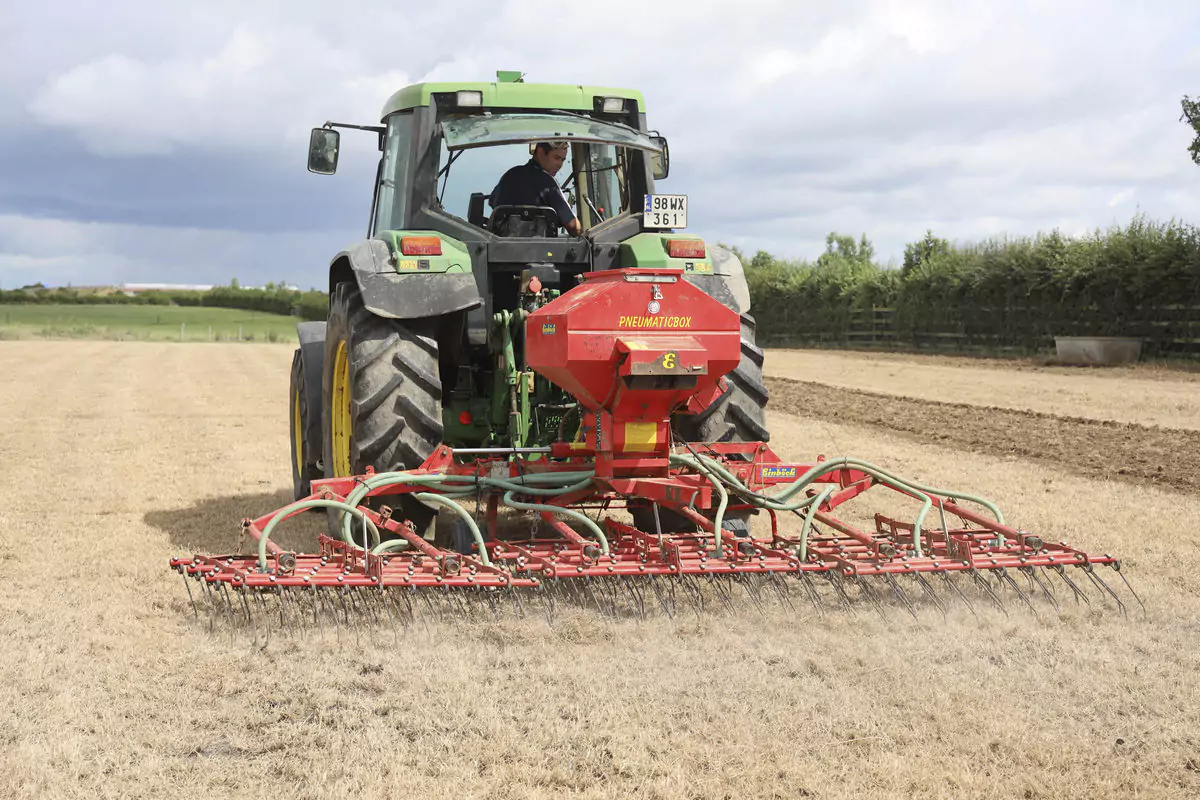Whether adhering to nitrate derogation guidance, trying to reduce costs or prioritising soil health, more and more farmers are reseeding grassland without ploughing. Germinal technical manager Dr Mary McEvoy weighs up the options.
“When we talk about reseeding grassland without ploughing, we are usually referring to minimum-tillage (min-till) or no-tillage (no-till),” explains Dr McEvoy.
“Both are a way of minimising cultivation and have become more popular in recent years. Min and no-till reduce soil disturbance and are claimed to sequester more carbon over time.
“A further driver of change is the 2022 Nitrates Derogation which states ploughing is prohibited after 31 May.”
Reseeding grassland using min-till
As seed-to-soil contact is vital in establishing grass seed, min-till is a good compromise as it involves only a light or shallow cultivation, but still creates that essential contact.
Particularly well-suited to rocky soils, because min-till causes minimal disturbance of the ground, the return to grazing is also quicker than with traditional ploughing. Min-till also costs less in labour, fuel and machinery maintenance.
The most popular min-till method is discing and one-pass. Dr McEvoy explains: “Allow up to three weeks after spraying off the old sward for weeds to break down and for sods to break up.
“Left intact, sods can be pulled by birds and seeds won’t anchor as well – making the plant more vulnerable and more easily pulled up by the roots when grazed. Remove the trash and apply lime which will help break down the decaying sward.”

Using no-till or direct drilling to reseed grassland
Direct drilling means soil is only disturbed when absolutely necessary (for example, when putting the seed in the ground).
As with min-till, you should spray off the old sward and leave for the appropriate withdrawal period before cutting tightly. Again, lime is important here as it will help breakdown the old sward and counteract surface acidity as it decays.
Before drilling, also check for thatch and if needed. Use a tine harrow to clean it up further and maximise opportunities for that seed-to-soil contact.
However, says Dr McEvoy, the weather becomes more important with direct drilling. “There needs to be enough moisture in the soil to allow the seed to germinate, so a broken forecast is important to ensure the seedlings get enough moisture to keep growing.
“Finding the perfect weather window to drill before rainfall will help enormously.” Rolling after sowing will also help with soil-to-seed contact.
Lastly, drill at the right depth. For Germinal’s specialist agricultural grass seed mixtures, 5-10 mm is ideal.
Reseeding techniques for success
Regardless of the reseeding technique used, follow these ‘good practice’ tips to give your reseed the best possible start:
- Use quality grass seed varieties. Consult the Teagasc Pasture Profit Index to find the best grass seed varieties for your system and make sure they are included in your grass seed mixture. AberGain and Gracehill are the leading late tetraploid varieties, while AberChoice and AberBann are the leading late diploid varieties for 2022;
- Reduce surface trash. As it decays, trash can release acid which inhibits the growth of new grass seeds. Graze or cut it about 7-10 days after spraying;
- Check soil fertility by testing soil pH and applying lime if necessary, before spreading fertiliser. Apply lime immediately after removing the trash as it can help counteract residual acidity in the soil from the old sward;
- Create a fine, firm seedbed. If you couldn’t ride a bike across the seedbed, it’s not ready;
- Regardless of reseeding technique, post-sowing rolling is essential for good seed-to-soil contact;
- Apply a post-emergence spray. Waiting too long to spray will let weeds establish and become harder to control in the long run. Depending on growth and conditions, the optimum window for spraying is 4-6 weeks after sowing. Where clover is present use a clover-safe spray;
- Monitor for pests. Direct drilling creates a greater risk of pests in the crop. Monitor closely and consider using slug pellets.
For more information, videos and guides on reseeding, visit our Germinal Knowledge Hub. If you have any questions, please ask our grass and forage seed experts.
